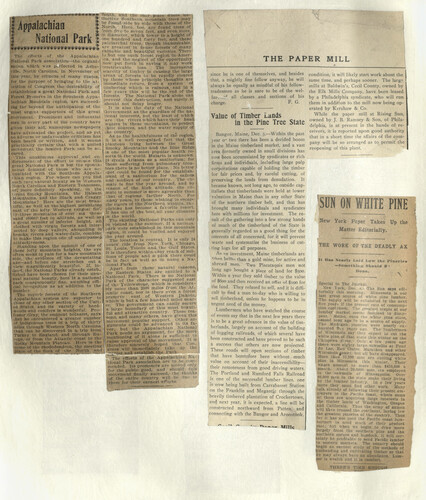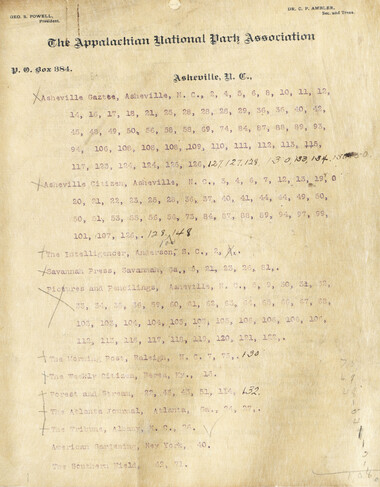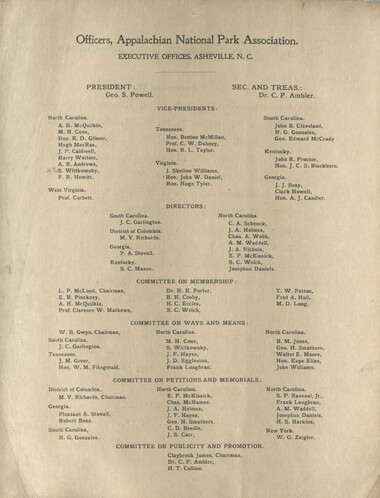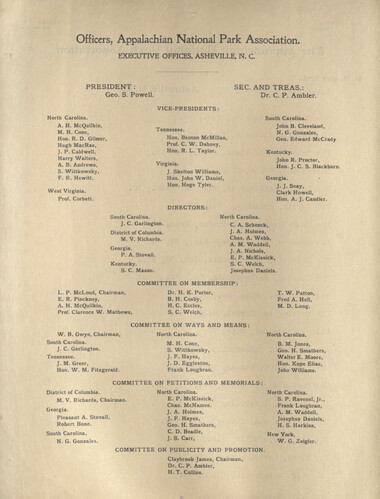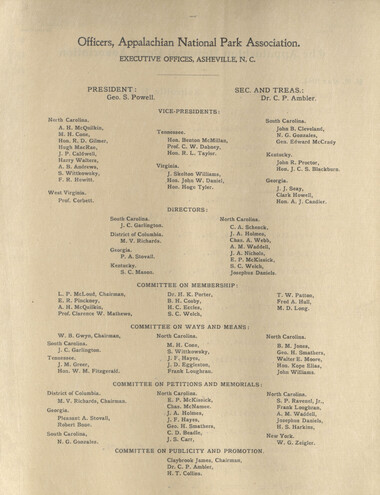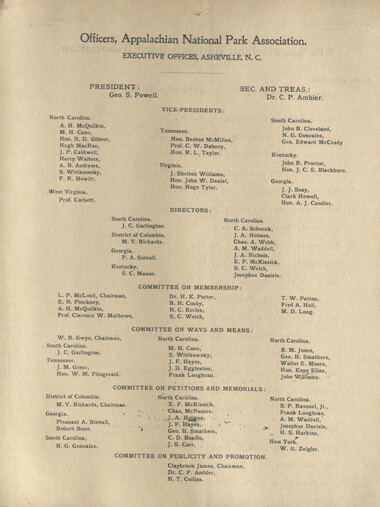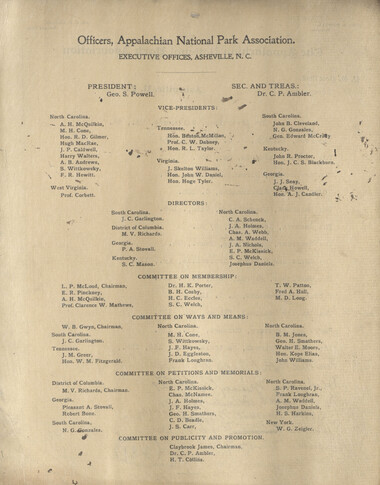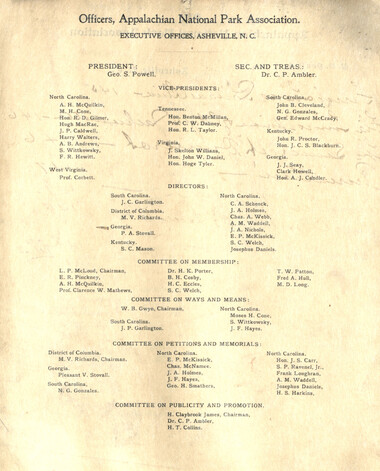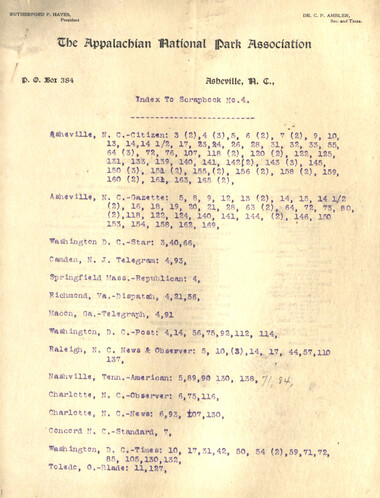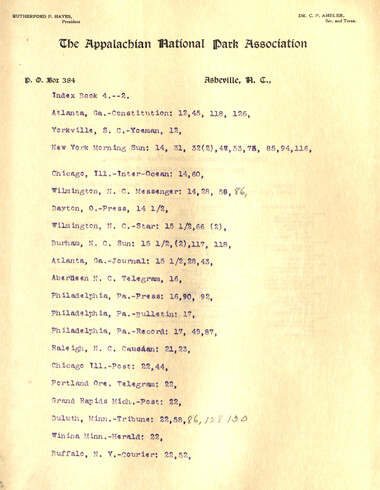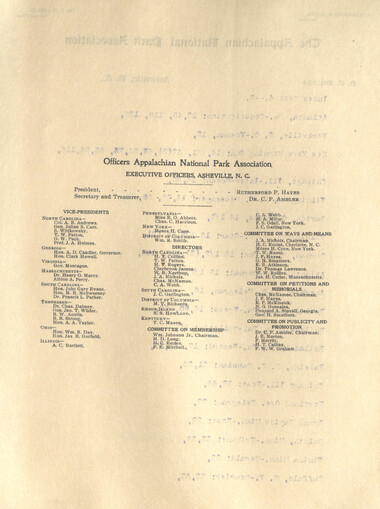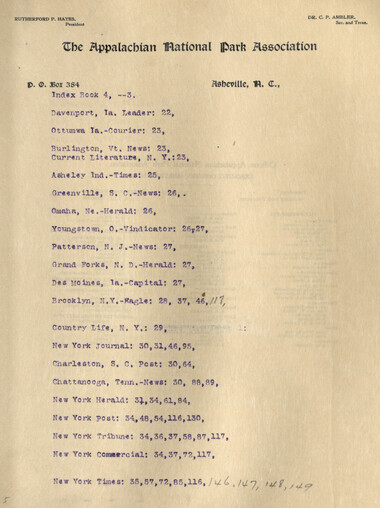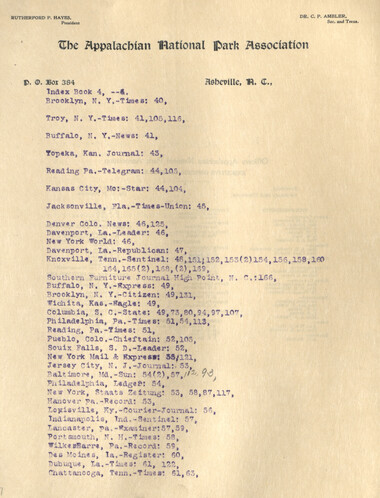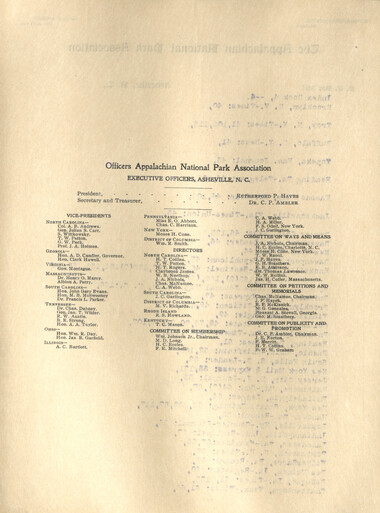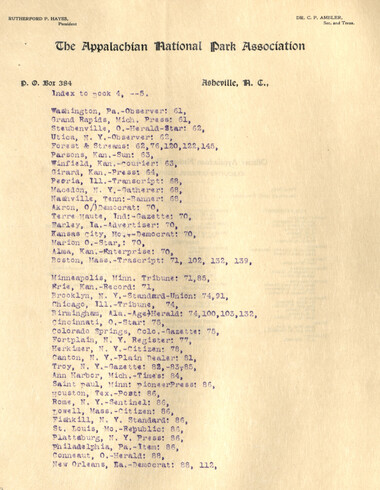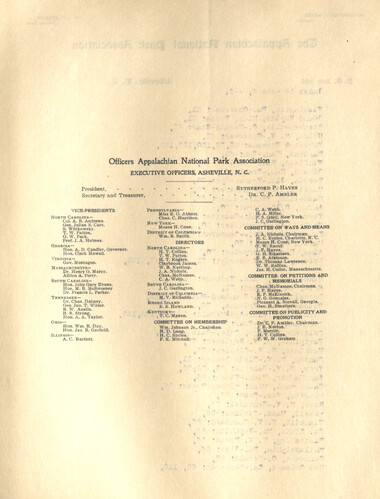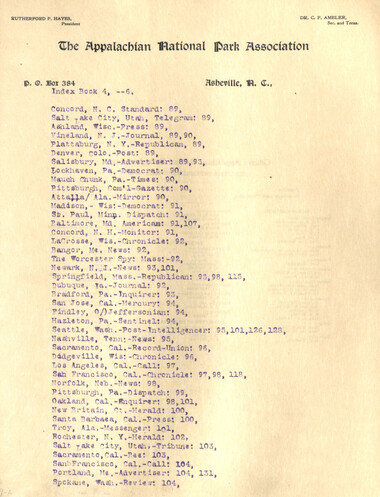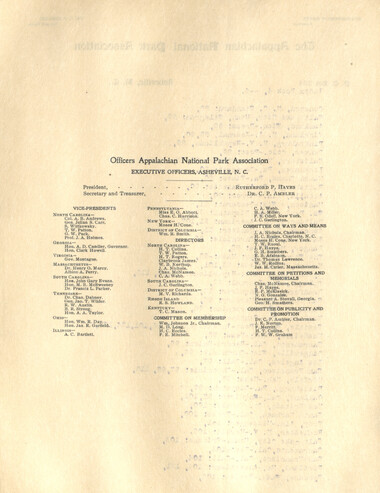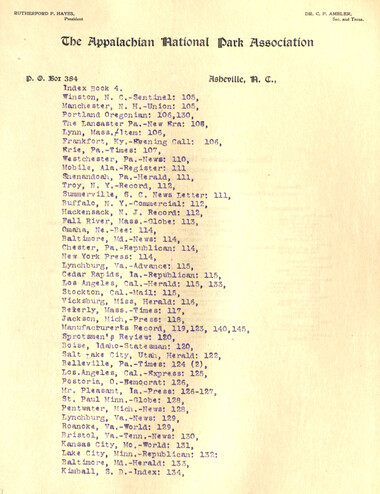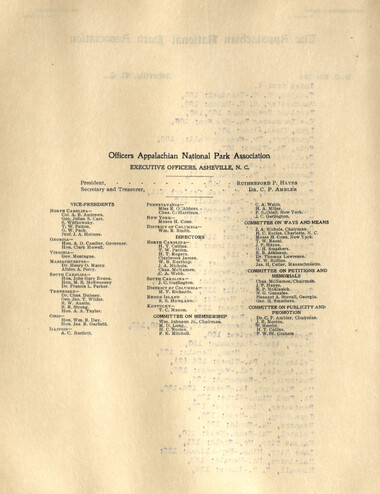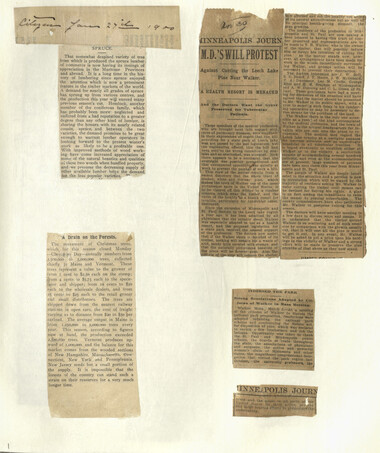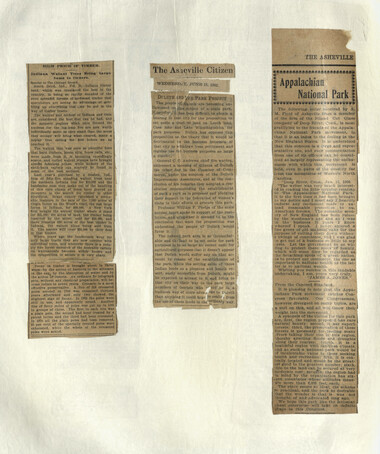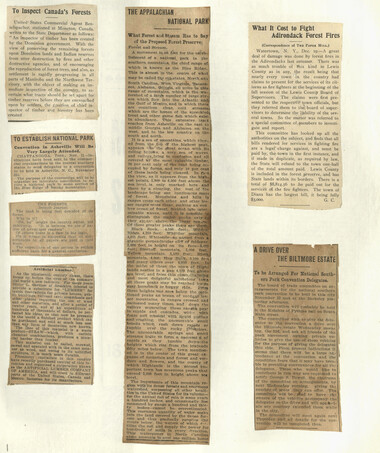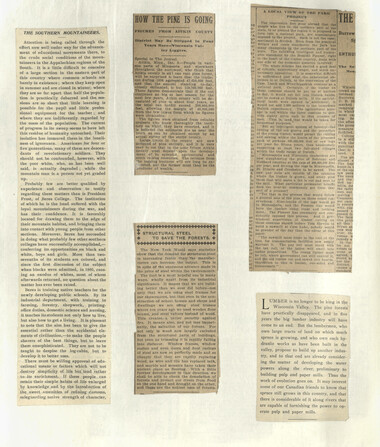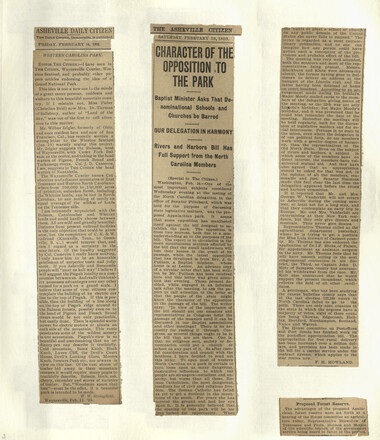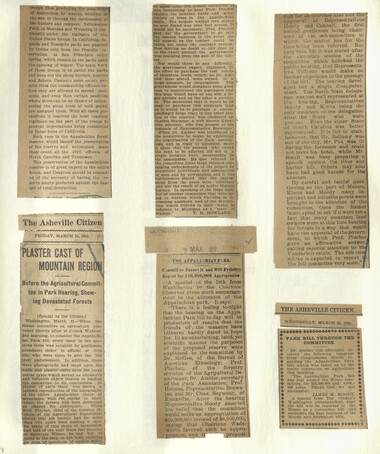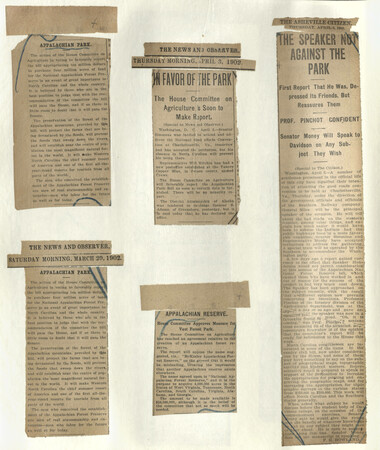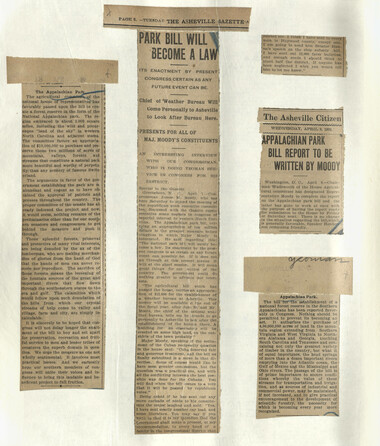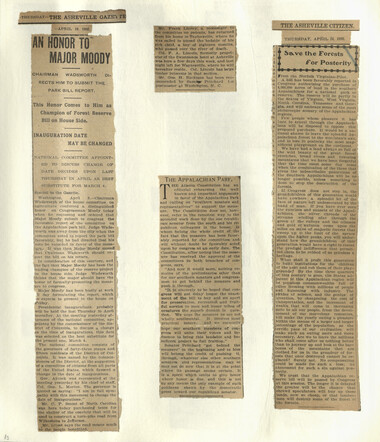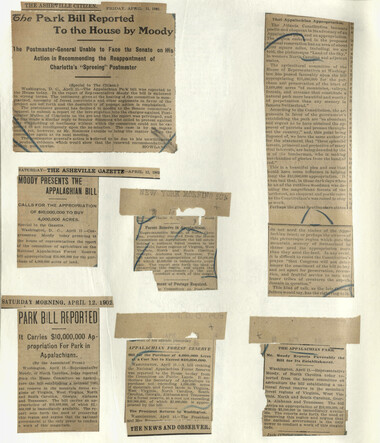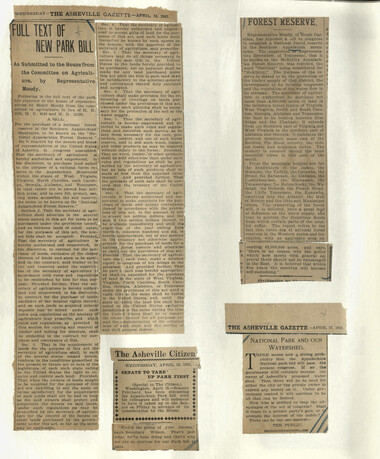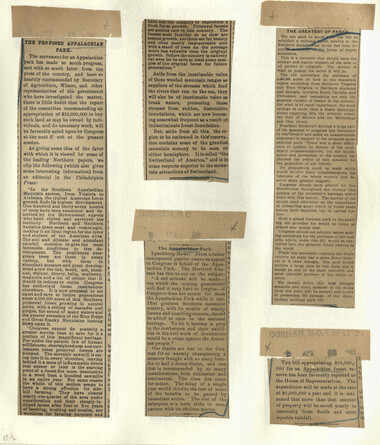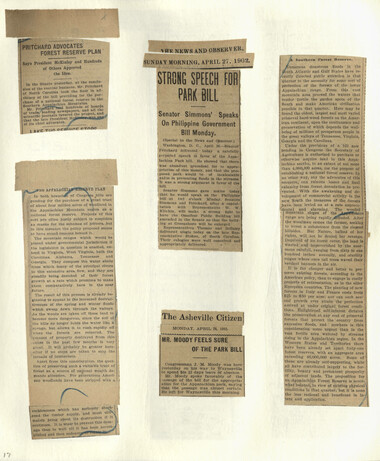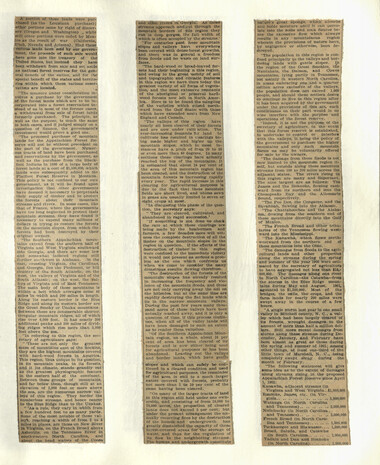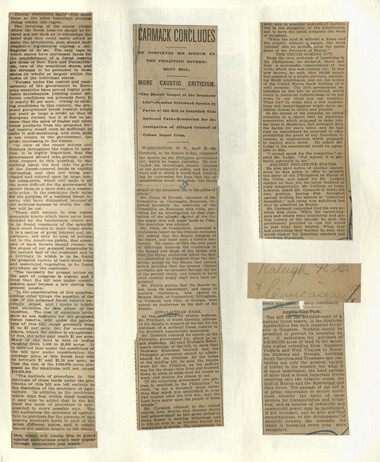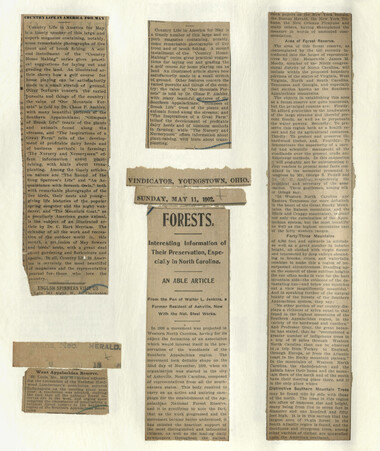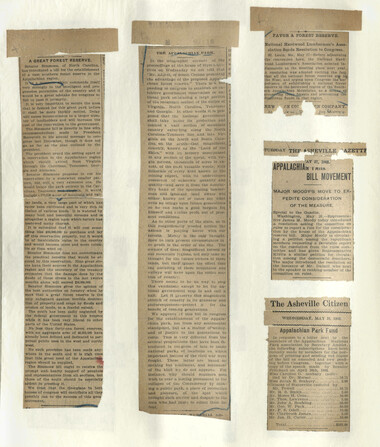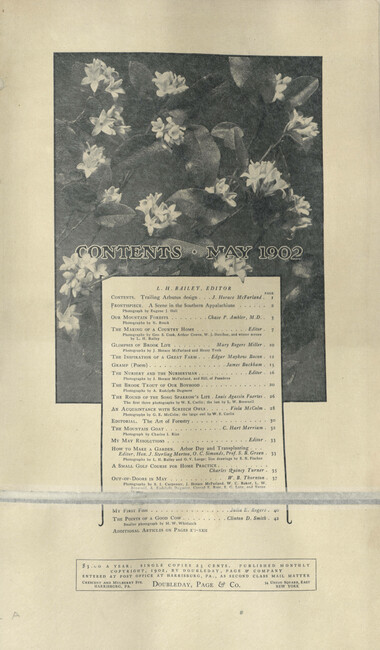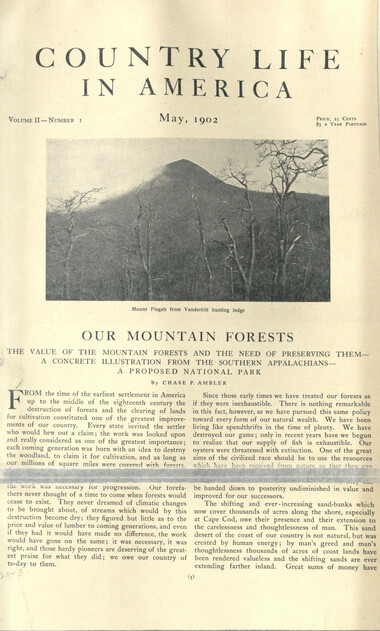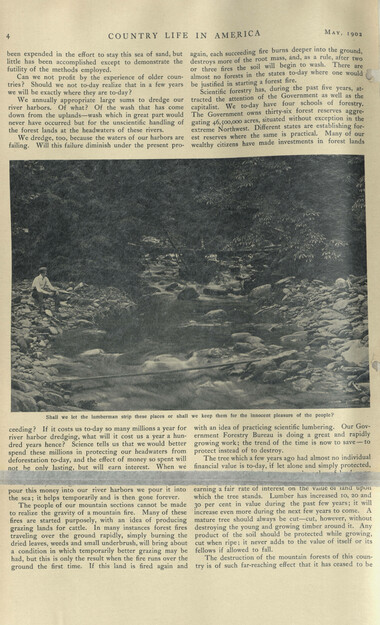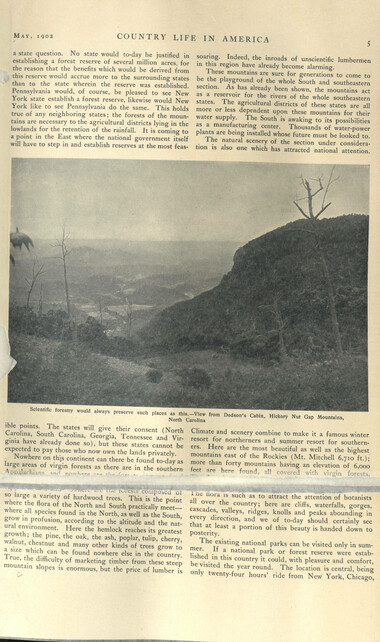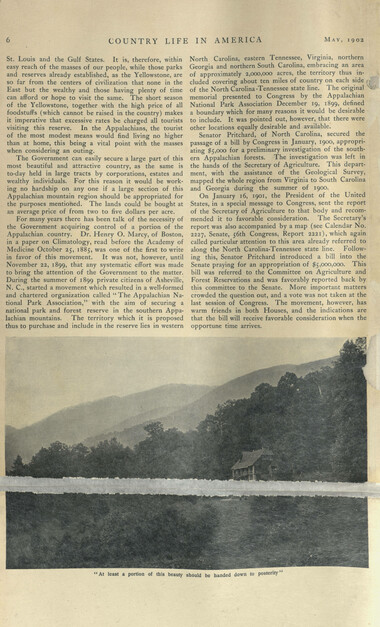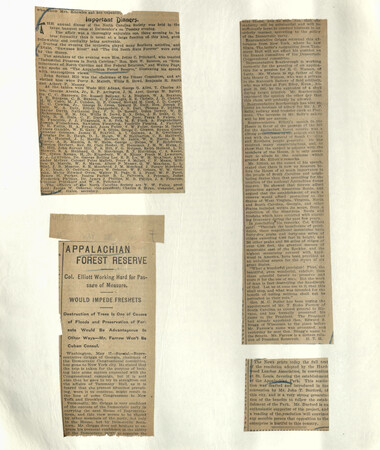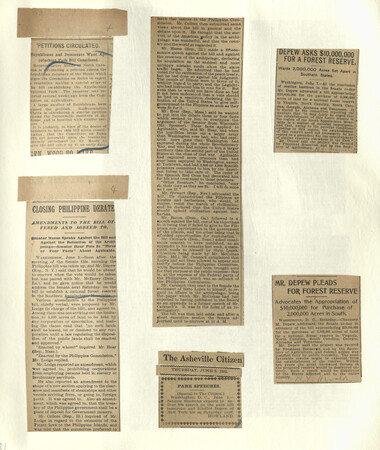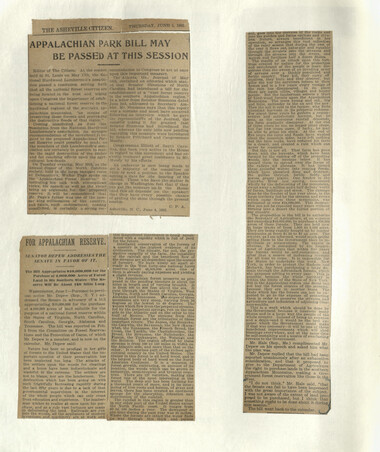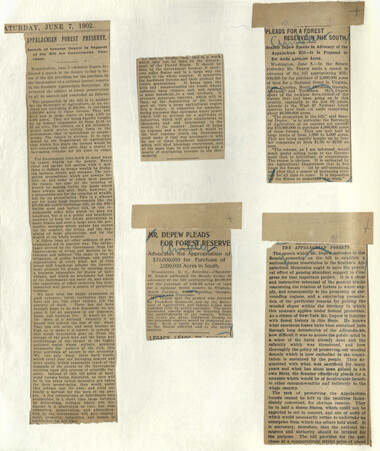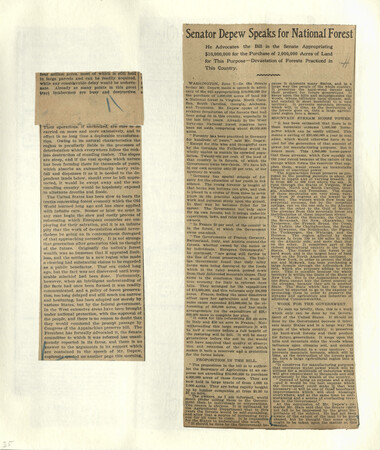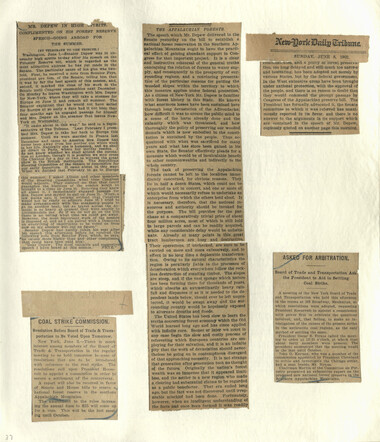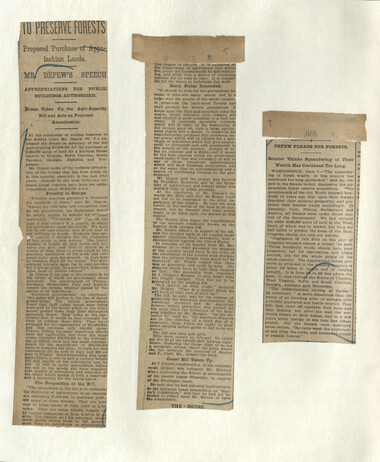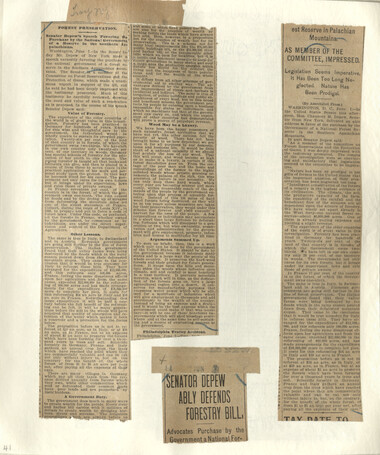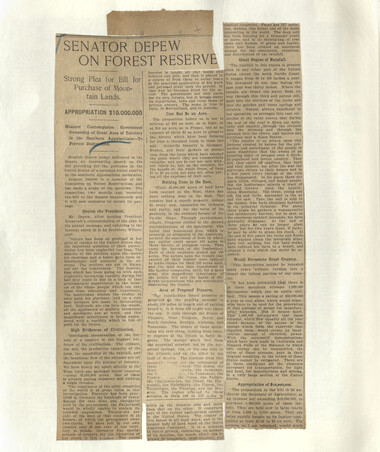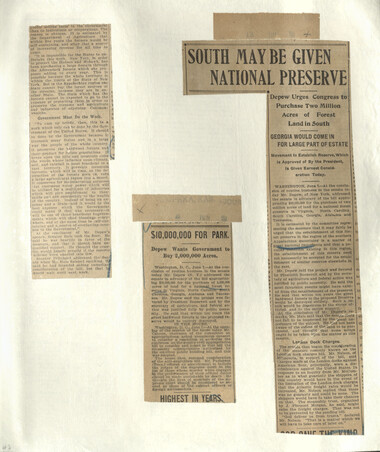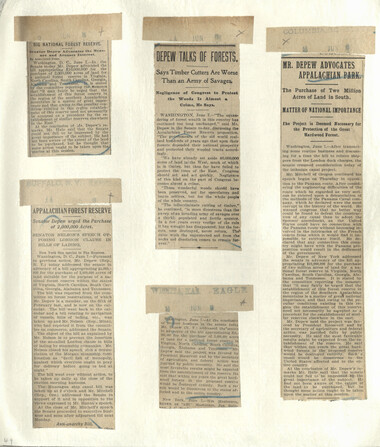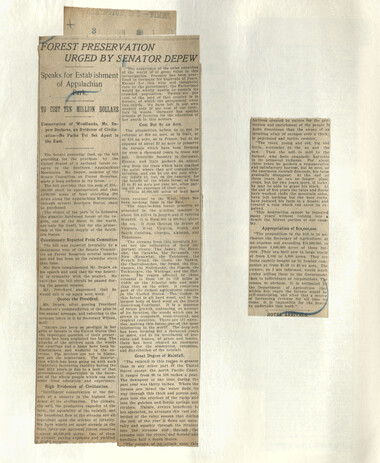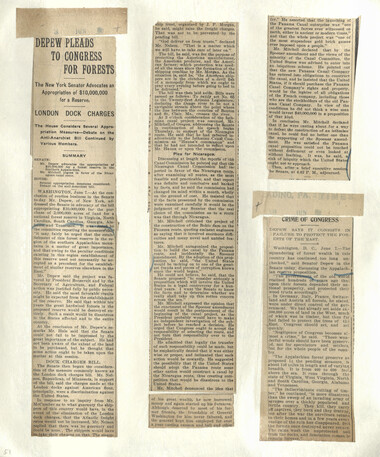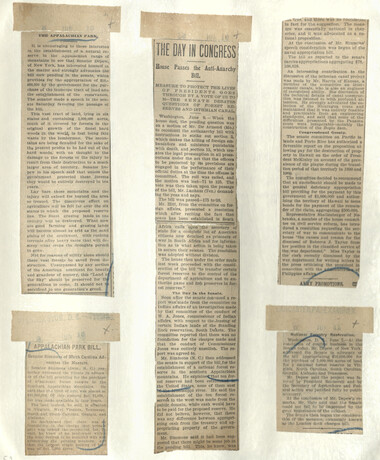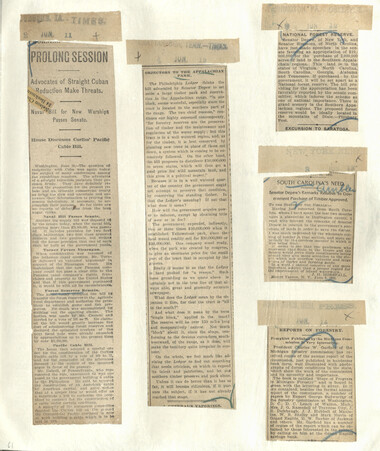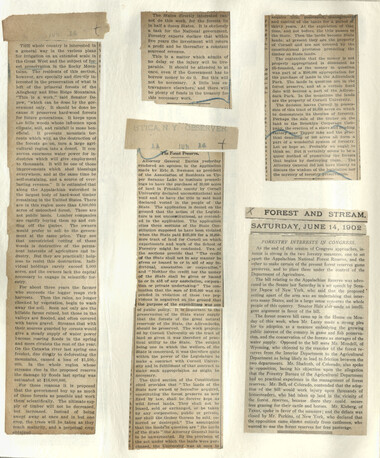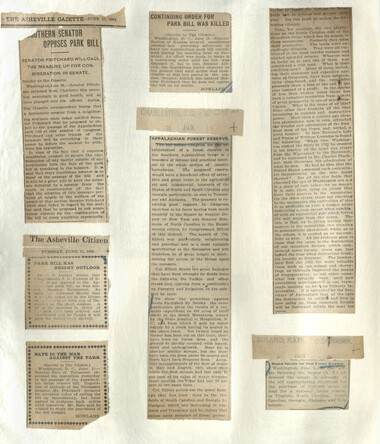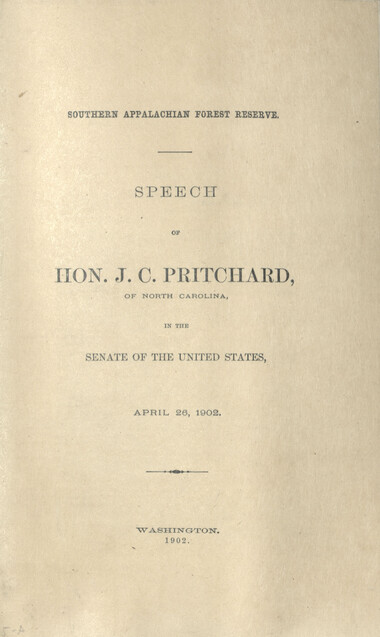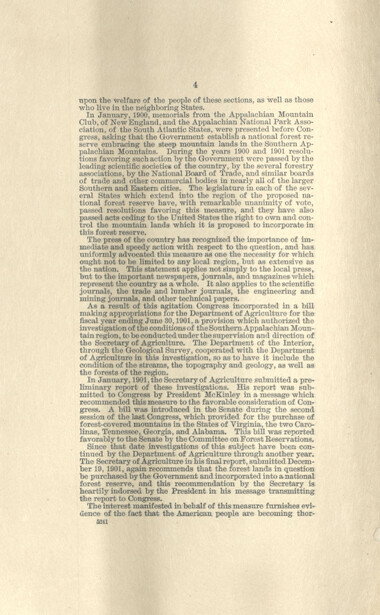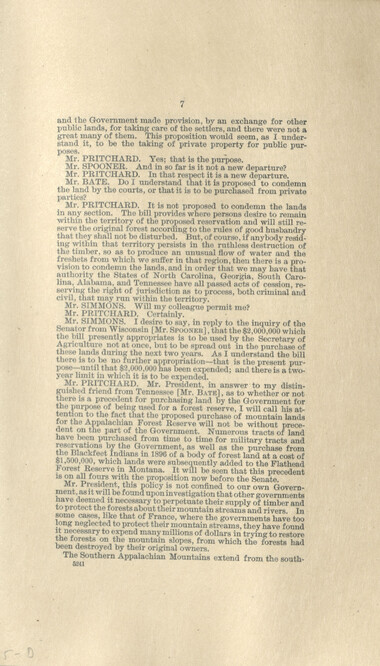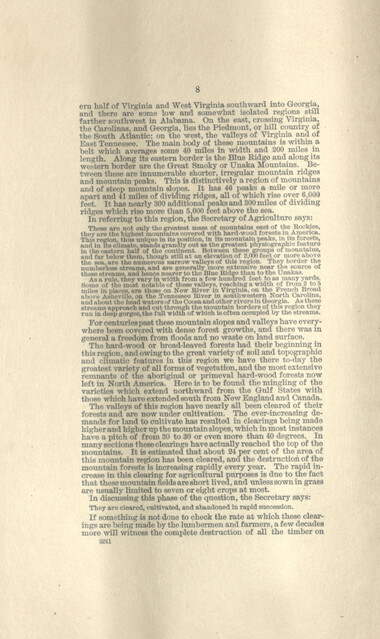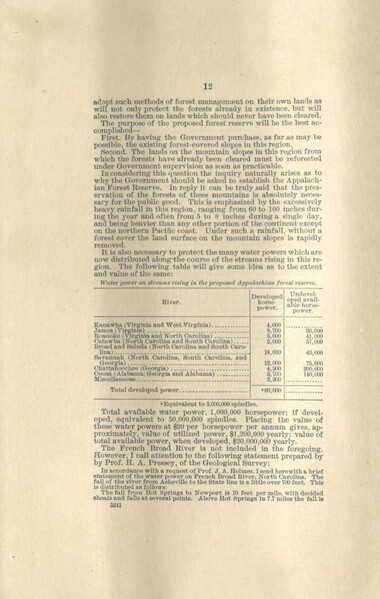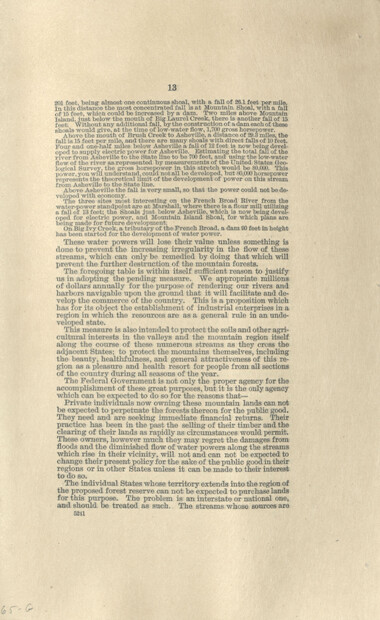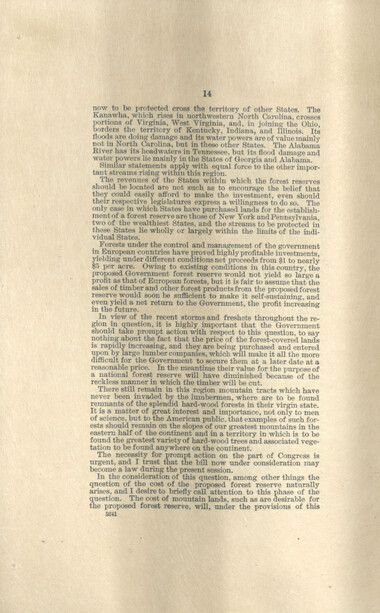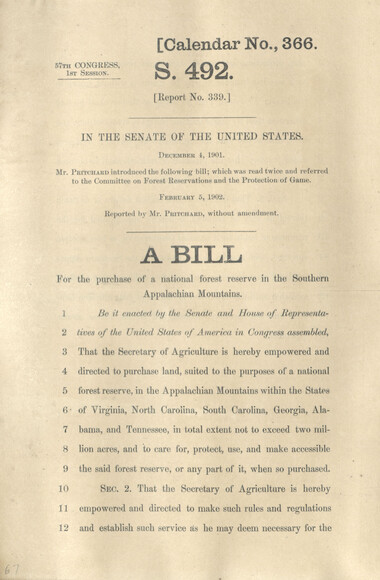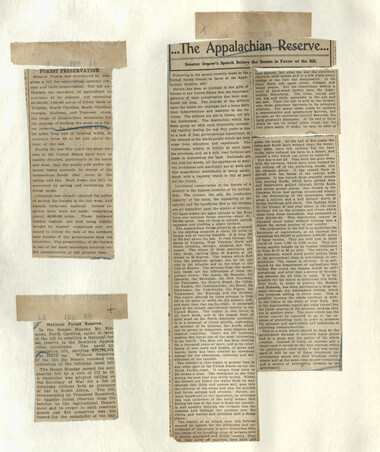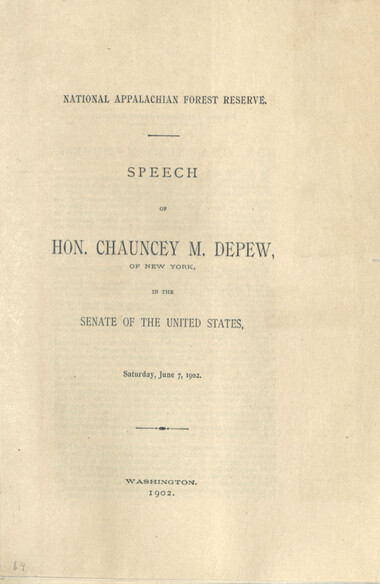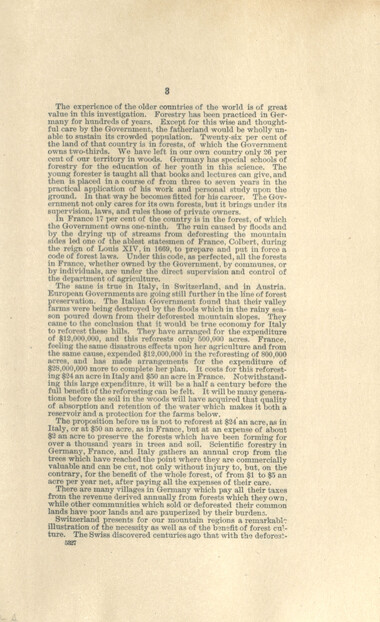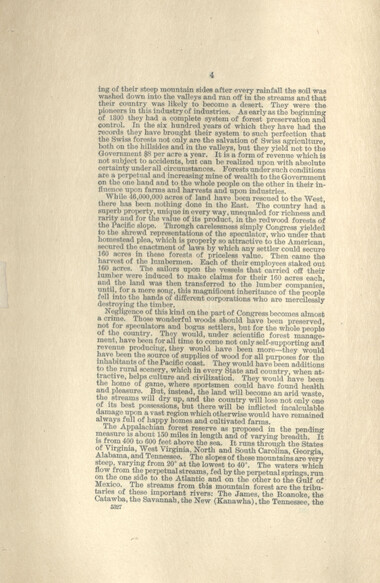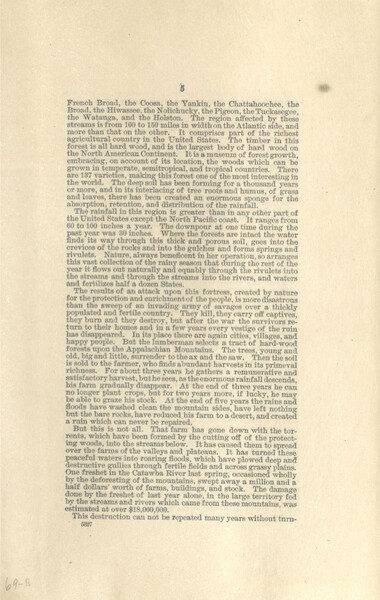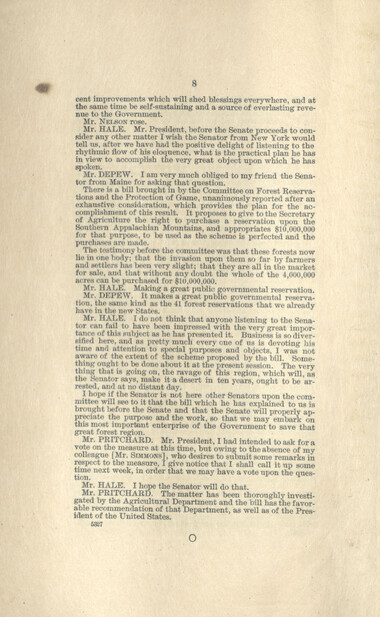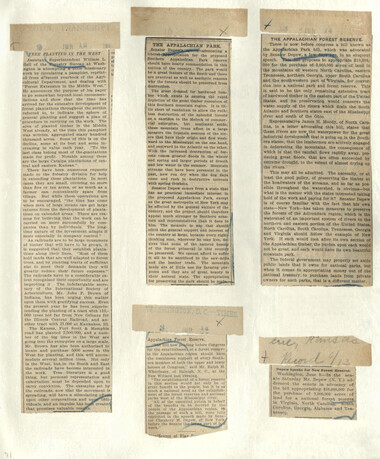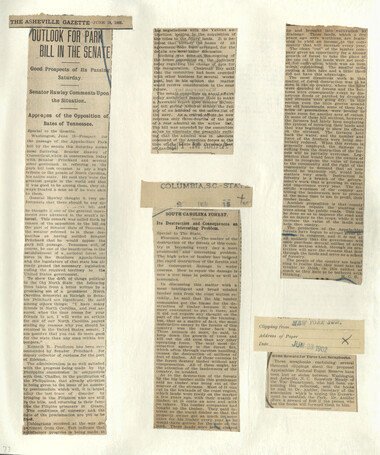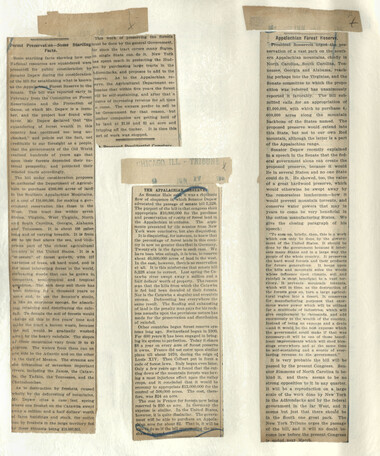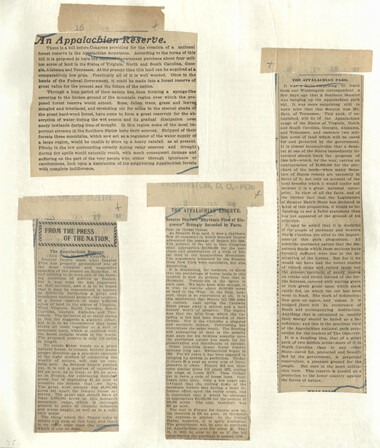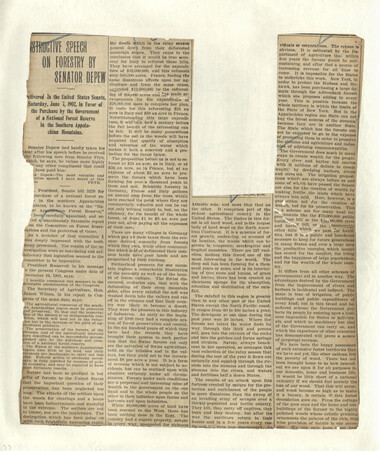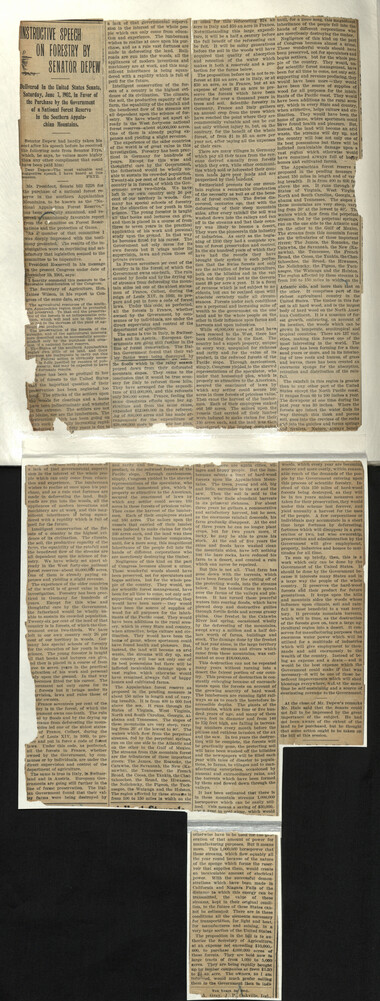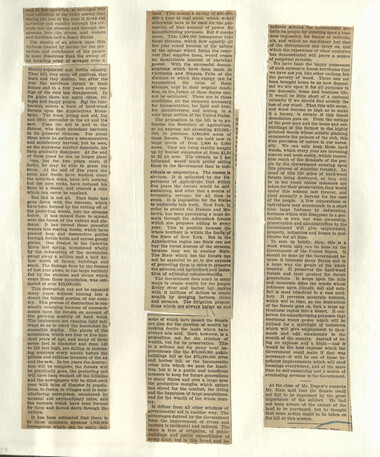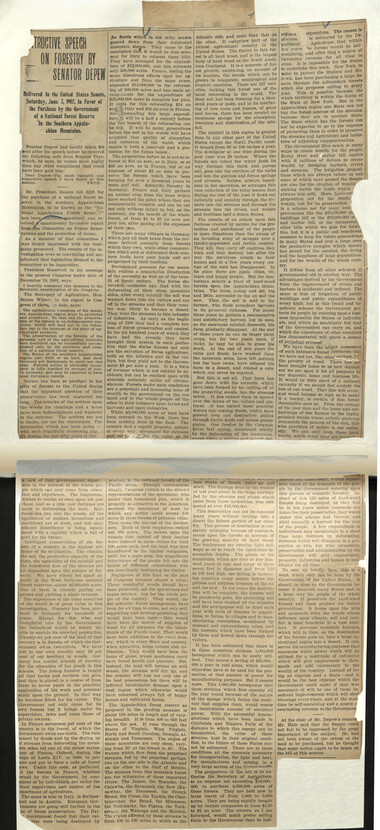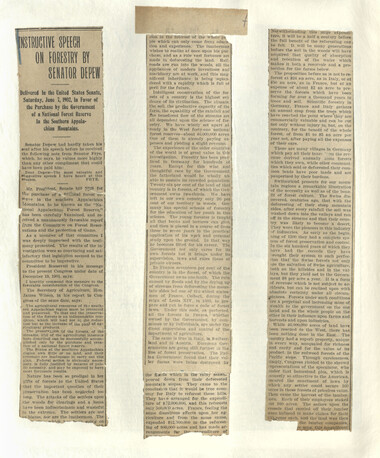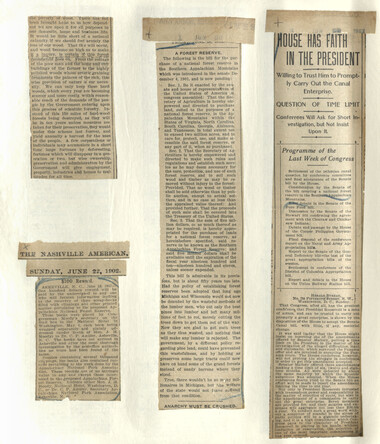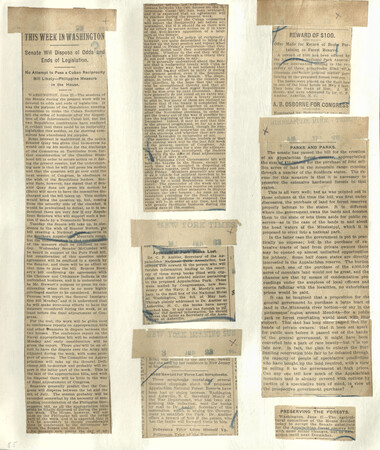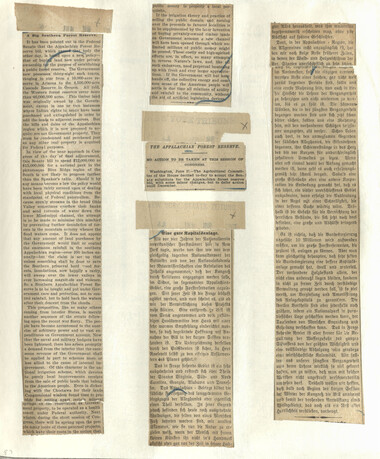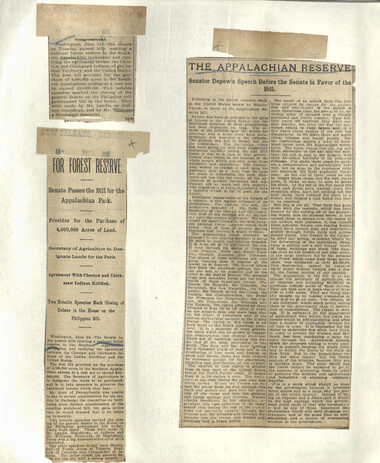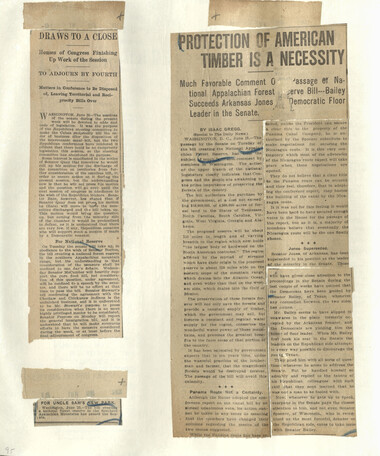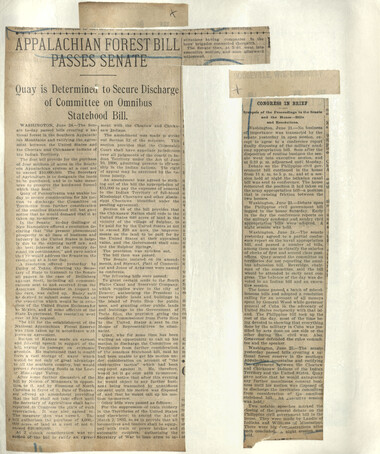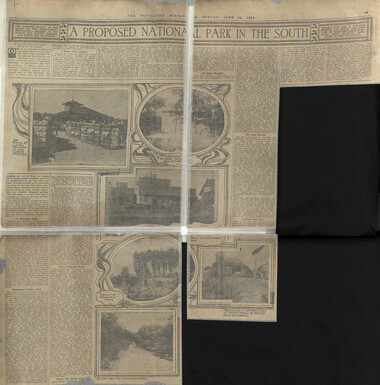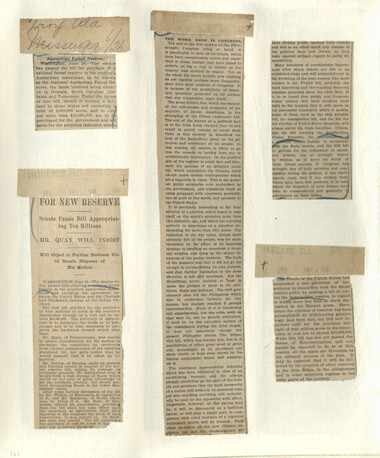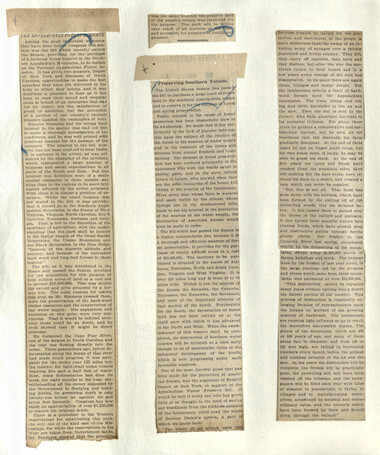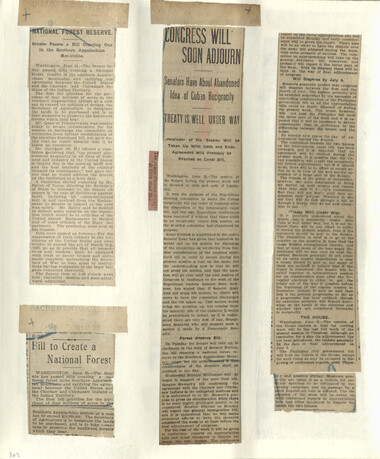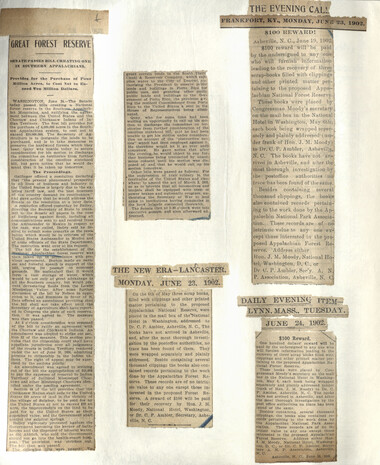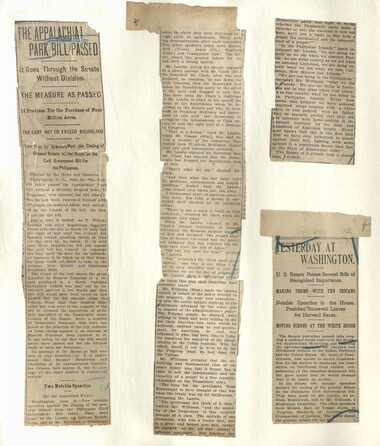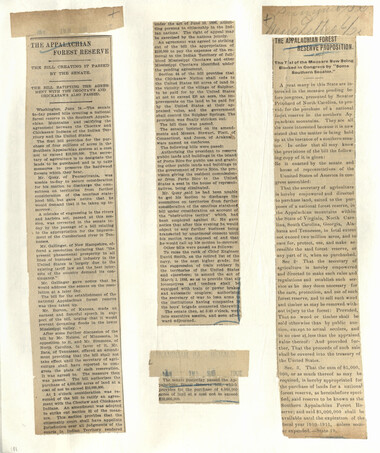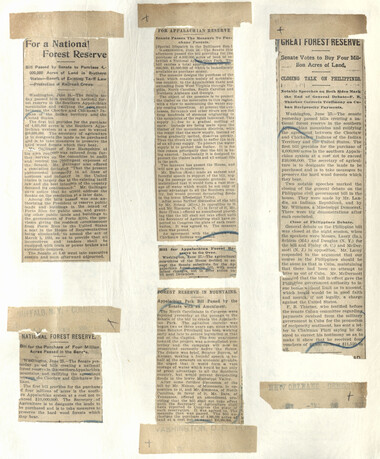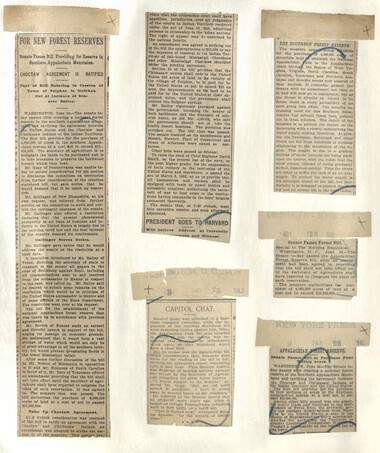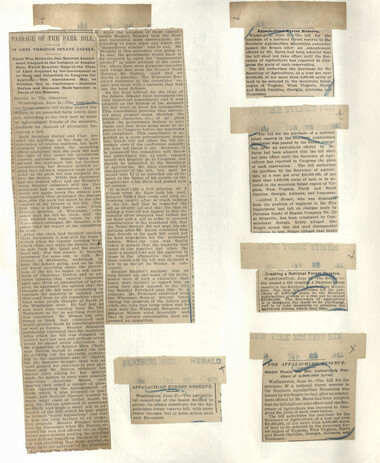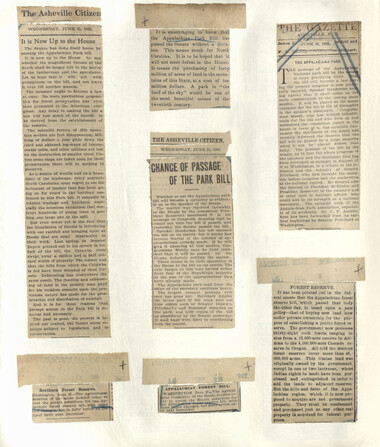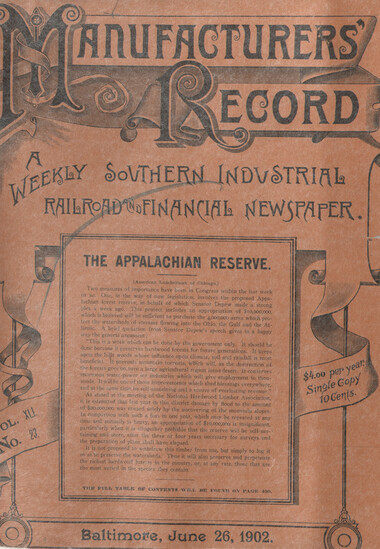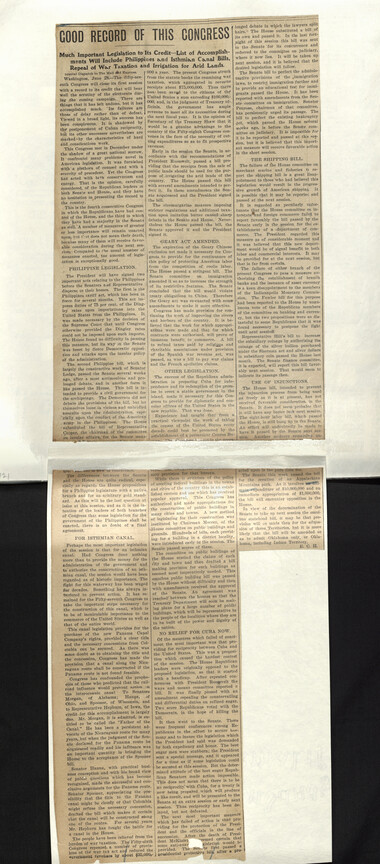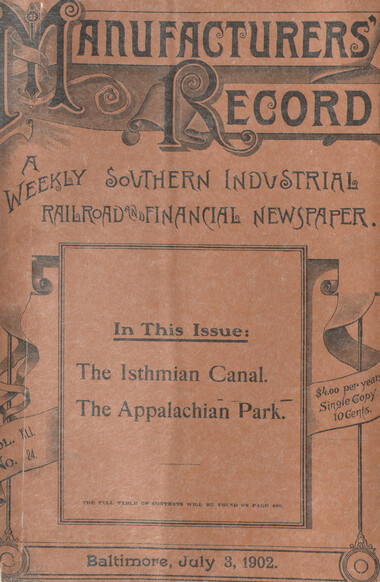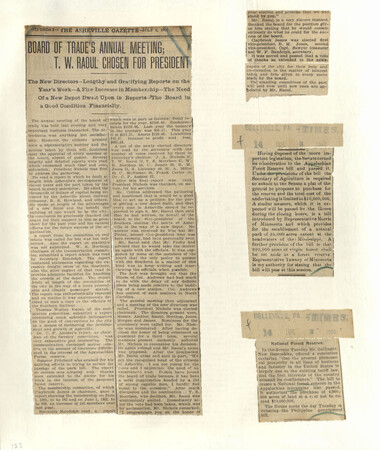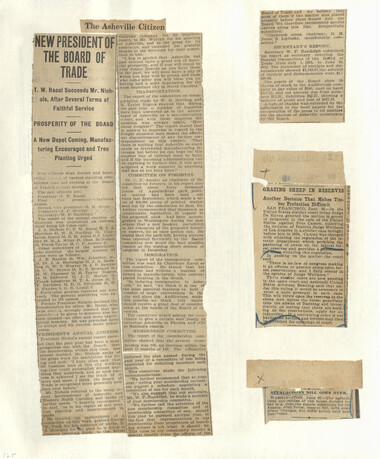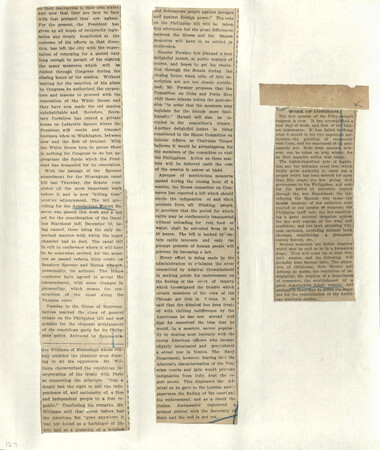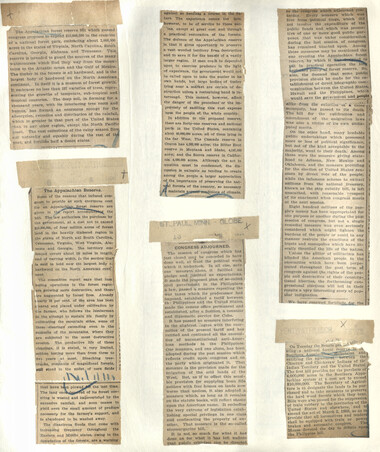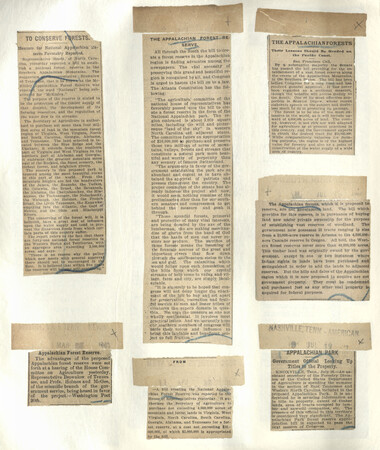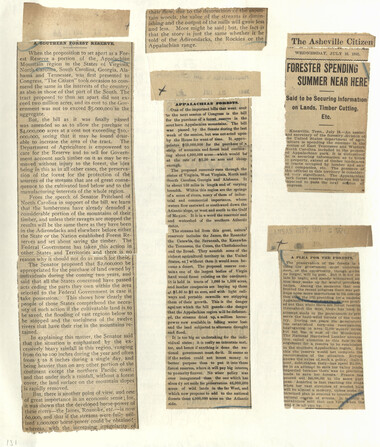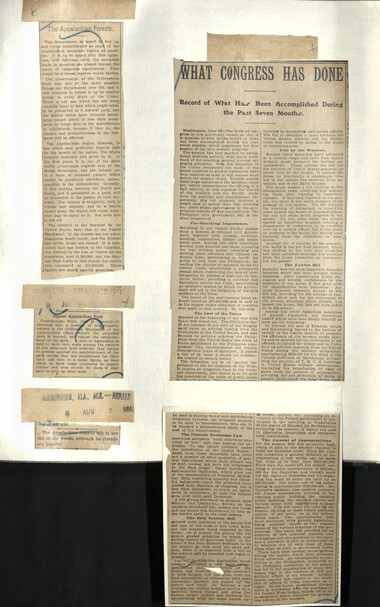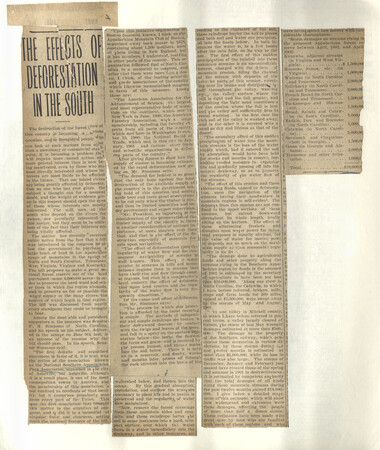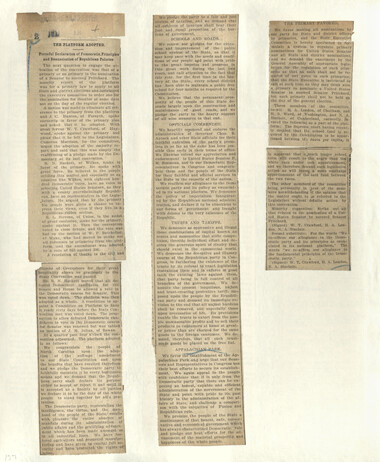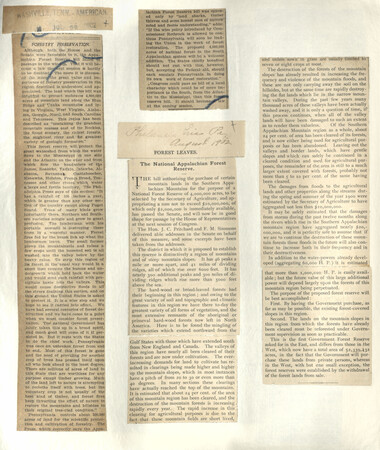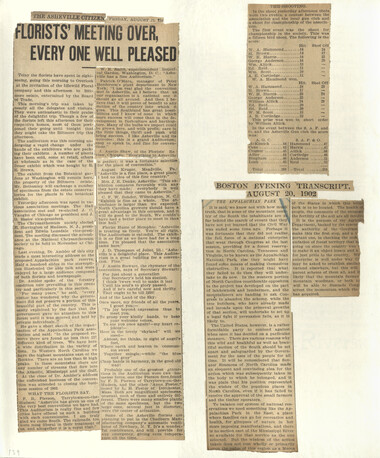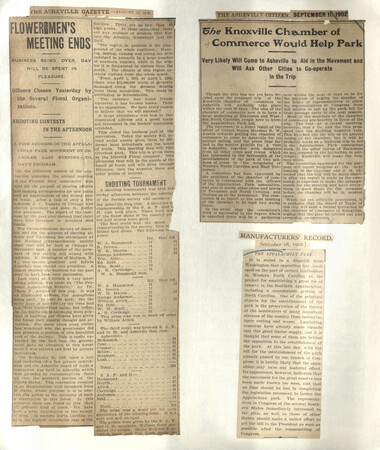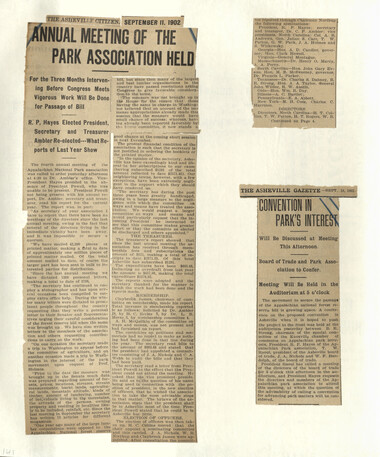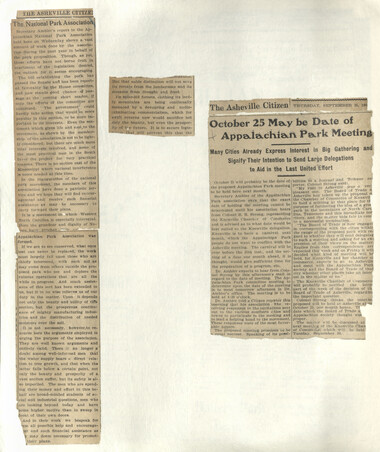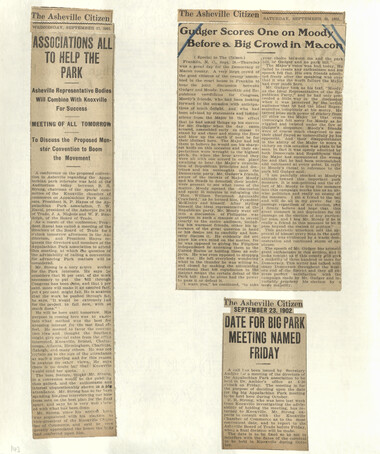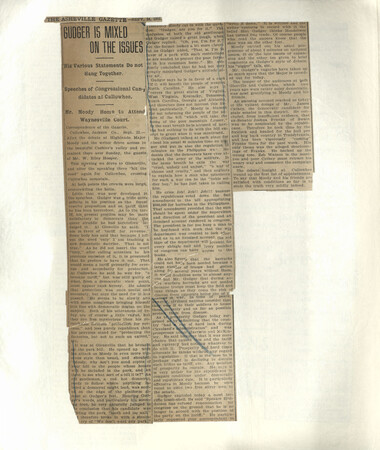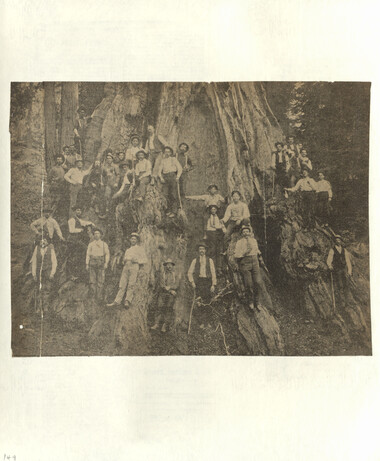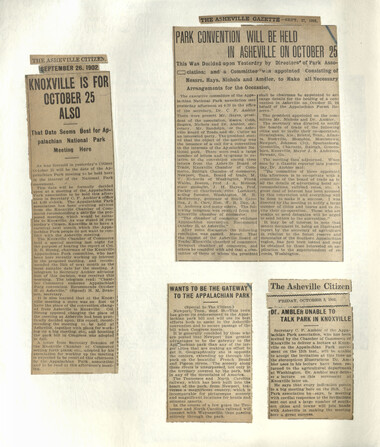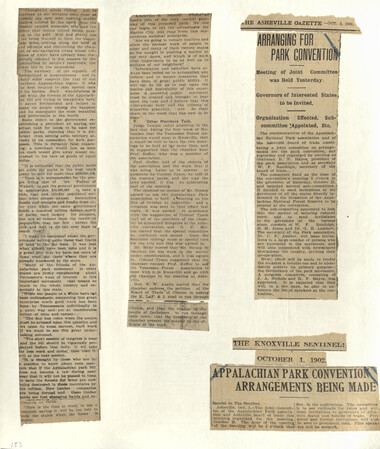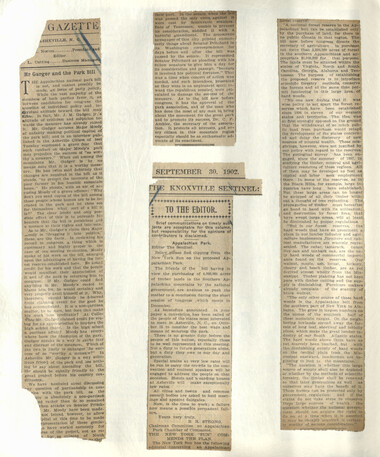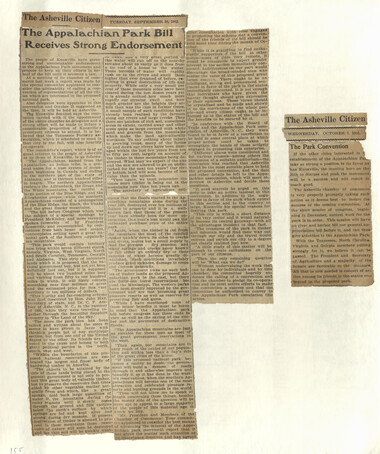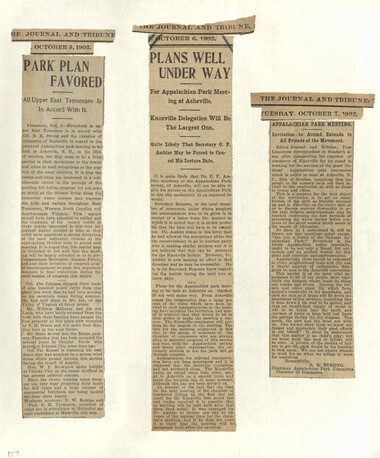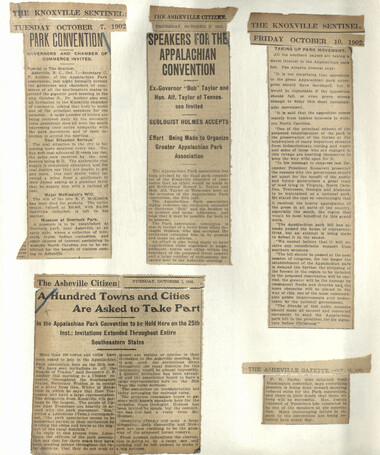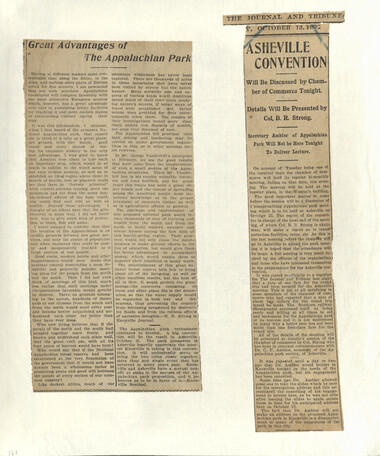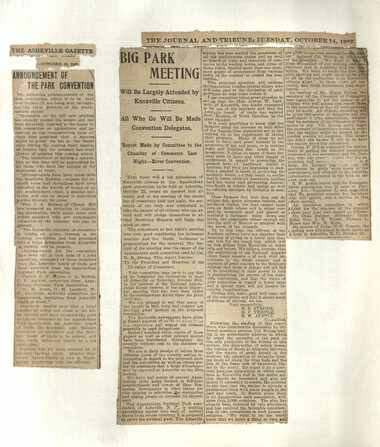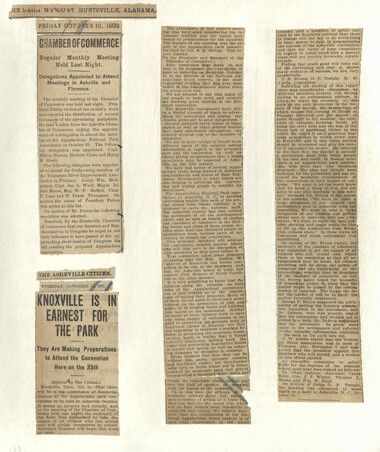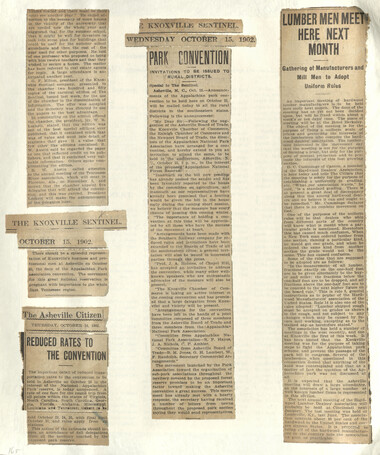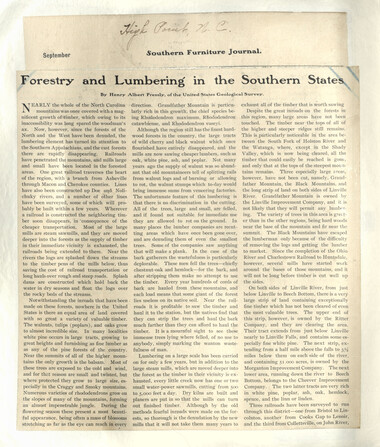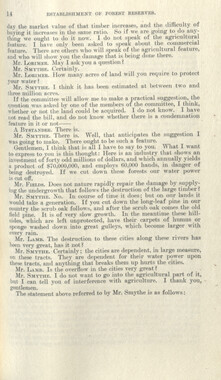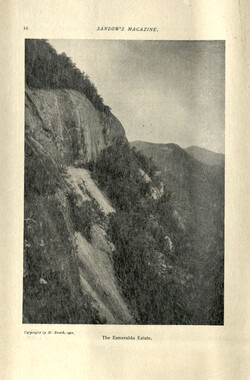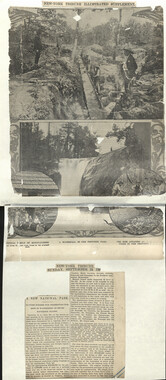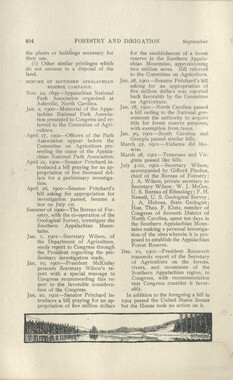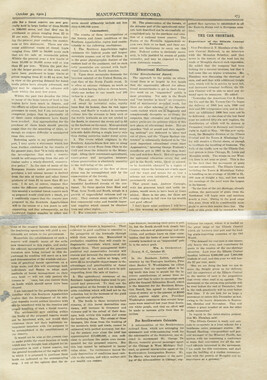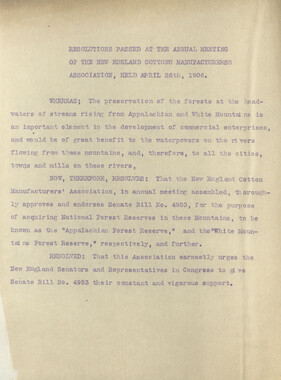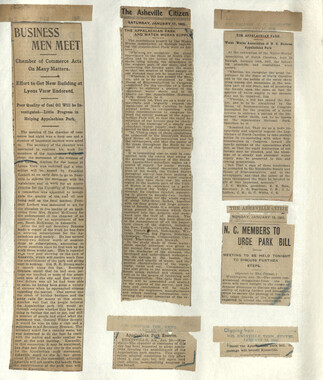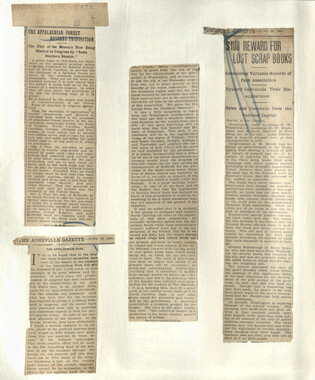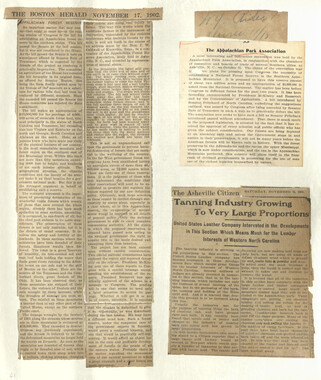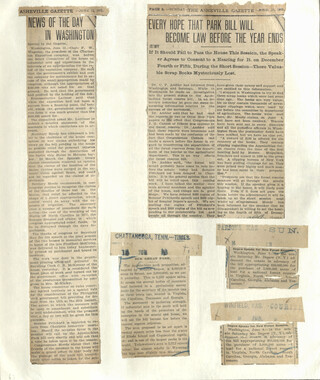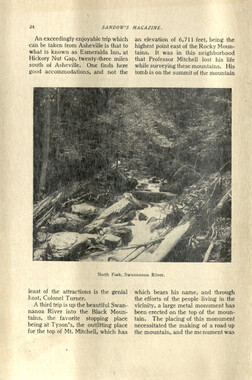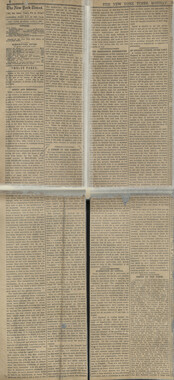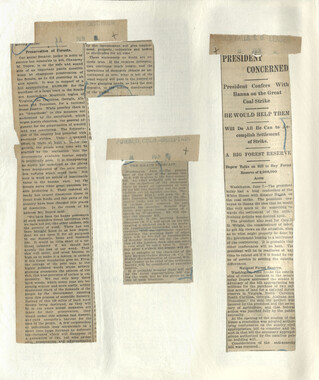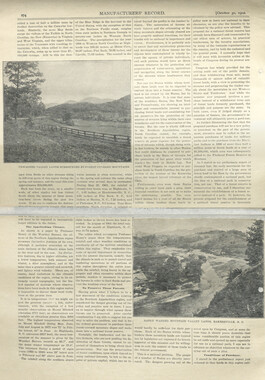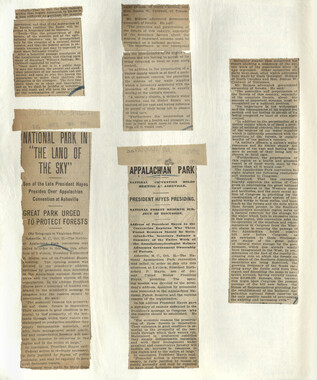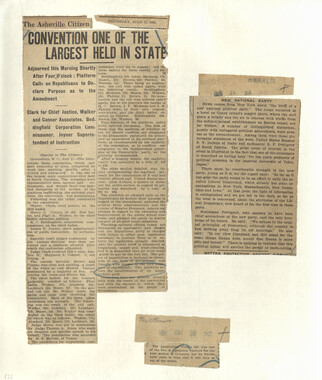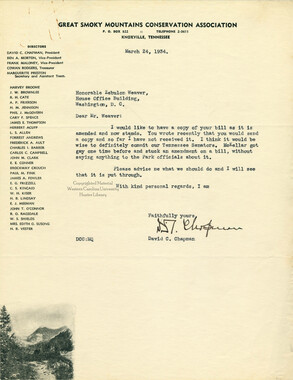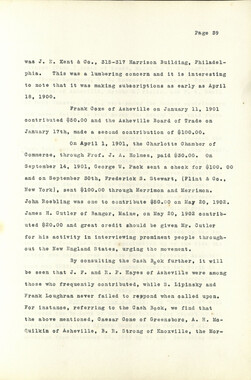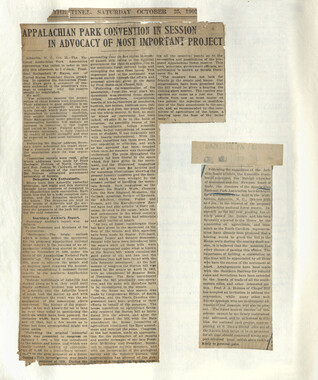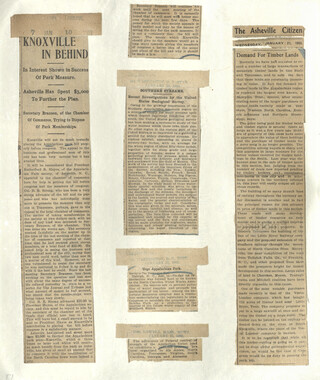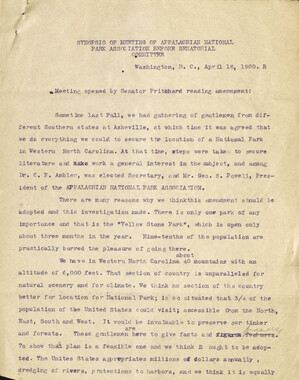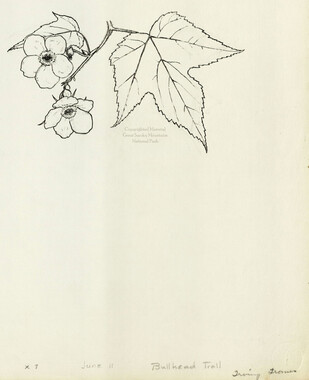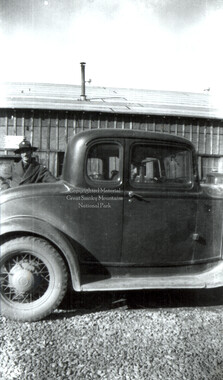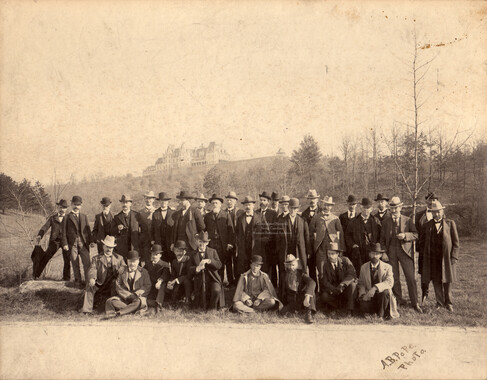Western Carolina University (20)
View all
- Canton Champion Fibre Company (2308)
- Cherokee Traditions (292)
- Civil War in Southern Appalachia (165)
- Craft Revival (1942)
- Great Smoky Mountains - A Park for America (2766)
- Highlights from Western Carolina University (430)
- Horace Kephart (941)
- Journeys Through Jackson (154)
- LGBTQIA+ Archive of Jackson County (85)
- Oral Histories of Western North Carolina (314)
- Picturing Appalachia (6772)
- Stories of Mountain Folk (413)
- Travel Western North Carolina (160)
- Western Carolina University Fine Art Museum Vitreograph Collection (129)
- Western Carolina University Herbarium (92)
- Western Carolina University: Making Memories (708)
- Western Carolina University Publications (2283)
- Western Carolina University Restricted Electronic Theses and Dissertations (146)
- Western North Carolina Regional Maps (71)
- World War II in Southern Appalachia (131)
University of North Carolina Asheville (6)
View all
- Allanstand Cottage Industries (62)
- Appalachian National Park Association (53)
- Bennett, Kelly, 1890-1974 (1388)
- Berry, Walter (76)
- Brasstown Carvers (40)
- Carver, George Washington, 1864?-1943 (26)
- Cathey, Joseph, 1803-1874 (1)
- Champion Fibre Company (233)
- Champion Paper and Fibre Company (297)
- Cherokee Indian Fair Association (16)
- Cherokee Language Program (22)
- Crowe, Amanda (40)
- Edmonston, Thomas Benton, 1842-1907 (7)
- Ensley, A. L. (Abraham Lincoln), 1865-1948 (275)
- Fromer, Irving Rhodes, 1913-1994 (70)
- George Butz (BFS 1907) (46)
- Goodrich, Frances Louisa (120)
- Grant, George Alexander, 1891-1964 (96)
- Heard, Marian Gladys (60)
- Kephart, Calvin, 1883-1969 (15)
- Kephart, Horace, 1862-1931 (313)
- Kephart, Laura, 1862-1954 (39)
- Laney, Gideon Thomas, 1889-1976 (439)
- Masa, George, 1881-1933 (61)
- McElhinney, William Julian, 1896-1953 (44)
- Niggli, Josephina, 1910-1983 (10)
- North Carolina Park Commission (105)
- Osborne, Kezia Stradley (9)
- Owens, Samuel Robert, 1918-1995 (11)
- Penland Weavers and Potters (36)
- Roberts, Vivienne (15)
- Roth, Albert, 1890-1974 (142)
- Schenck, Carl Alwin, 1868-1955 (1)
- Sherrill's Photography Studio (2565)
- Southern Highland Handicraft Guild (127)
- Southern Highlanders, Inc. (71)
- Stalcup, Jesse Bryson (46)
- Stearns, I. K. (213)
- Thompson, James Edward, 1880-1976 (226)
- United States. Indian Arts and Crafts Board (130)
- USFS (683)
- Vance, Zebulon Baird, 1830-1894 (1)
- Weaver, Zebulon, 1872-1948 (58)
- Western Carolina College (230)
- Western Carolina Teachers College (282)
- Western Carolina University (1794)
- Western Carolina University. Mountain Heritage Center (18)
- Whitman, Walt, 1819-1892 (10)
- Wilburn, Hiram Coleman, 1880-1967 (73)
- Williams, Isadora (3)
- Cain, Doreyl Ammons (0)
- Crittenden, Lorraine (0)
- Rhodes, Judy (0)
- Smith, Edward Clark (0)
- Appalachian Region, Southern (2569)
- Asheville (N.C.) (1923)
- Avery County (N.C.) (26)
- Blount County (Tenn.) (161)
- Buncombe County (N.C.) (1672)
- Cherokee County (N.C.) (283)
- Clay County (N.C.) (555)
- Graham County (N.C.) (233)
- Great Smoky Mountains National Park (N.C. and Tenn.) (519)
- Haywood County (N.C.) (3524)
- Henderson County (N.C.) (70)
- Jackson County (N.C.) (4694)
- Knox County (Tenn.) (25)
- Knoxville (Tenn.) (12)
- Lake Santeetlah (N.C.) (10)
- Macon County (N.C.) (420)
- Madison County (N.C.) (212)
- McDowell County (N.C.) (39)
- Mitchell County (N.C.) (132)
- Polk County (N.C.) (35)
- Qualla Boundary (981)
- Rutherford County (N.C.) (76)
- Swain County (N.C.) (2115)
- Transylvania County (N.C.) (270)
- Watauga County (N.C.) (12)
- Waynesville (N.C.) (84)
- Yancey County (N.C.) (72)
- Aerial Photographs (3)
- Aerial Views (60)
- Albums (books) (4)
- Articles (1)
- Artifacts (object Genre) (228)
- Bibliographies (1)
- Biography (general Genre) (2)
- Cards (information Artifacts) (38)
- Clippings (information Artifacts) (191)
- Crafts (art Genres) (622)
- Depictions (visual Works) (21)
- Design Drawings (1)
- Drawings (visual Works) (184)
- Envelopes (73)
- Facsimiles (reproductions) (1)
- Fiction (general Genre) (4)
- Financial Records (12)
- Fliers (printed Matter) (67)
- Glass Plate Negatives (381)
- Guidebooks (2)
- Internegatives (10)
- Interviews (815)
- Land Surveys (102)
- Letters (correspondence) (1013)
- Manuscripts (documents) (618)
- Maps (documents) (177)
- Memorandums (25)
- Minutes (administrative Records) (59)
- Negatives (photographs) (5835)
- Newsletters (1285)
- Newspapers (2)
- Occupation Currency (1)
- Paintings (visual Works) (1)
- Pen And Ink Drawings (1)
- Periodicals (193)
- Personal Narratives (10)
- Photographs (12976)
- Plans (maps) (1)
- Poetry (6)
- Portraits (4533)
- Postcards (329)
- Programs (documents) (151)
- Publications (documents) (2236)
- Questionnaires (65)
- Scrapbooks (282)
- Sheet Music (2)
- Slides (photographs) (402)
- Songs (musical Compositions) (2)
- Sound Recordings (796)
- Specimens (92)
- Speeches (documents) (15)
- Tintypes (photographs) (8)
- Transcripts (322)
- Video Recordings (physical Artifacts) (23)
- Vitreographs (129)
- Text Messages (0)
- A.L. Ensley Collection (275)
- Appalachian Industrial School Records (7)
- Appalachian National Park Association Records (336)
- Axley-Meroney Collection (2)
- Bayard Wootten Photograph Collection (20)
- Bethel Rural Community Organization Collection (7)
- Blumer Collection (5)
- C.W. Slagle Collection (20)
- Canton Area Historical Museum (2110)
- Carlos C. Campbell Collection (282)
- Cataloochee History Project (64)
- Cherokee Studies Collection (4)
- Daisy Dame Photograph Album (5)
- Daniel Boone VI Collection (1)
- Doris Ulmann Photograph Collection (112)
- Elizabeth H. Lasley Collection (1)
- Elizabeth Woolworth Szold Fleharty Collection (4)
- Frank Fry Collection (95)
- George Masa Collection (173)
- Gideon Laney Collection (452)
- Hazel Scarborough Collection (2)
- Hiram C. Wilburn Papers (28)
- Historic Photographs Collection (236)
- Horace Kephart Collection (861)
- Humbard Collection (33)
- Hunter and Weaver Families Collection (1)
- I. D. Blumenthal Collection (4)
- Isadora Williams Collection (4)
- Jesse Bryson Stalcup Collection (47)
- Jim Thompson Collection (224)
- John B. Battle Collection (7)
- John C. Campbell Folk School Records (80)
- John Parris Collection (6)
- Judaculla Rock project (2)
- Kelly Bennett Collection (1407)
- Love Family Papers (11)
- Major Wiley Parris Civil War Letters (3)
- Map Collection (12)
- McFee-Misemer Civil War Letters (34)
- Mountain Heritage Center Collection (4)
- Norburn - Robertson - Thomson Families Collection (44)
- Pauline Hood Collection (7)
- Pre-Guild Collection (2)
- Qualla Arts and Crafts Mutual Collection (12)
- R.A. Romanes Collection (681)
- Rosser H. Taylor Collection (1)
- Samuel Robert Owens Collection (94)
- Sara Madison Collection (144)
- Sherrill Studio Photo Collection (2558)
- Smoky Mountains Hiking Club Collection (616)
- Stories of Mountain Folk - Radio Programs (374)
- The Reporter, Western Carolina University (510)
- Venoy and Elizabeth Reed Collection (16)
- WCU Gender and Sexuality Oral History Project (32)
- WCU Mountain Heritage Center Oral Histories (25)
- WCU Oral History Collection - Mountain People, Mountain Lives (71)
- WCU Students Newspapers Collection (1744)
- Western North Carolina Tomorrow Black Oral History Project (69)
- William Williams Stringfield Collection (2)
- Zebulon Weaver Collection (109)
- African Americans (390)
- Appalachian Trail (35)
- Artisans (521)
- Cherokee art (84)
- Cherokee artists -- North Carolina (10)
- Cherokee language (21)
- Cherokee pottery (101)
- Cherokee women (208)
- Church buildings (170)
- Civilian Conservation Corps (U.S.) (110)
- College student newspapers and periodicals (1830)
- Dams (107)
- Dance (1023)
- Education (222)
- Floods (61)
- Folk music (1015)
- Forced removal, 1813-1903 (2)
- Forest conservation (220)
- Forests and forestry (1184)
- Gender nonconformity (4)
- Great Smoky Mountains National Park (N.C. and Tenn.) (181)
- Hunting (38)
- Landscape photography (25)
- Logging (118)
- Maps (83)
- Mines and mineral resources (8)
- North Carolina -- Maps (18)
- Paper industry (38)
- Postcards (255)
- Pottery (135)
- Railroad trains (71)
- Rural electrification -- North Carolina, Western (3)
- School integration -- Southern States (2)
- Segregation -- North Carolina, Western (5)
- Slavery (5)
- Sports (452)
- Storytelling (244)
- Waterfalls -- Great Smoky Mountains (N.C. and Tenn.) (66)
- Weaving -- Appalachian Region, Southern (280)
- Wood-carving -- Appalachian Region, Southern (328)
- World War, 1939-1945 (173)
Appalachian National Park Association Newspaper Clippings, 1899-1902
Item
Item’s are ‘child’ level descriptions to ‘parent’ objects, (e.g. one page of a whole book).
-
-
I Appalachian ■ National Park South, and the oniv place vvneie uia- i tlnctive Southern mountain trees may1 nd side by side with those of the North. Here, too, are found tree '.rom five to seven feet, and even more. in diameter, which tower to a height of one hundred and forty feet, and these. patriarchal trees, though innumerable. . , ......... f##*'W*#T****'**'*'*'**l4f*'*'*'**»* are greatest in dense forests of many- valuable and beautiful varieties. There fforts of the Appalachian ational Park association—the organl- tion which was perfected in Ashe- Ilc North Carolina, in November of is year, by citizens of many States, r the purpose of bringing to the at- n of Congress the desirability of I stablishing a great National Park and Forest Preserve in the Southern Appa- '■ lachian Mountain region, are succeeding far beyond the anticipation of the most urgent supporters of this great ment. Prominent and influential men in every part of the country have given their aid, numerous newspapers have advocated the project, and as yet no adverse or unfavoiable criticism has been heard or written, and it seems ically certain that wiih a united movement the desired Park can be se. dared. This unanimous approval ami endorsement' of the effort to secure this great National Park is bat the spontaneous demand, of those who aie ac quainted with the Southern Appala- i hian region. For where can you Unci such rare nat-ural beauty as in Western North Carolina and Eastern Tennessee, or, more definitely speaking,, in the 'iniii Smoky Mountains, the i'.alsain Mountains, and the Black and Craggy Mountains? Here are the nv si I liful, as well as the highest mountains cast of th<- lofty Western ranges: ty-three mountain? of over six thousand (t'.uonr feet in altitude, as we!', as a great nuiiilier of inferior height, all Clothed with virgin forests and inlcr- abounding in io but one such forest region in Amer nd the neglect of the opportunity now put forth In saving it may work Irretrievable loss. The increasing scarcity of timber is causing the large of forests to be rapidly cleared by those whose principle thoughts are Immediate return, from a system of timbering which is ruinous, and in a few years this will be the end of the forests. The National Park alone can I'l-event this destruction, and surely it should not delay longer. It is also the duty, of the National Government as the guardian of the national interests, not the least of w liich are the rivers which have their head waters in these mountains, to protect their sources, and the water supply of the country. . As to the healthfulness of the region, it is a well recognized fact that the plauteau lying between the I Smoky Mountains and the Blue Ridge is one of the most popular health resorts In the world. Malaria is unknown. It rivals Arizona as a sanitorium; for those suffering from pulmonary lion tiles there is no better place. No bi ttar pot could be found for (he establishment of a sanitorium for the sailors and soldiers of our country. The climate is fine the year around, and by hi of the high altitude, the eli- maie in summer is more agreeable than that of regions- farther North, For naiiy s ears, to those w Ishing Igors of tin-Ninth.-in winters, th:i plateau has became a. favorite r It has one of tin: beal all 5 ear el; in the world. The existing National Parks can only died in the summer, if a na were established in this mountain egion, it could be visited and enjoyed sected by deep valleys. i brooks, rivers and water-falls, combine .ke this region one of unsurpassed n« j->'»- attractiveness. The location is central, n Is only 24 Standing upon the summit of one of hours' ride from Ni i Sfork, Ch these lofty mountain heights, the eye 'St. Louis, Toledo and the Clulf Stales often seeks in vain for a bare mountain side, the evidence of the devastating axe—and before one stretches out a view magnificently beautiful. If, indeed, the National-Parks already estab. St. ~. it is therefore within,easy reach of millions of people and a- park there could be in fuel as well as in name a National Park. Apart from these natural reasons, Ashed have been chosen for their unu- ' the Kastern States are entitled to a ■ ' National Park. There is no National sual natural beauty, here is a national park conspicuously fine, awaiting official recognition as an addition to the numb The superb forests of the Southern a lachian system are superior to those of any other section of the United States, and its variety of hardwoods and conifers is wonderful. Pro- ir Gray, the eminent botanist, says he encountered a greater number of indigenous trees in a trip of thirty niles through Western North Carolina than can be discovered in a trip from Turkey to Kngland, and through Europe, or from the Atlantic coast to the Rocky Mountain Plateau. Here is the of the rhododendron, the meeting ..r the flora of the North and Park of the character suggi of the Yellowstone, which is const bly more than 2000 miles from the Atlantic coast, nor is there even a forest preserve east of Western Dakota, which is but a few hundred miles nearer. The government can easily secure a large boundary of this most beautiful and attractive country. These reasons, and many others, have given this movement popular support. Other arguments could be advanced in its favor; but the Appalachian National Park needs no argument, for the mere i mentioning of it alone is sufficient to cause approval of the movement. It is therefore sincerely hoped that Congress will immediately take up the ~j*ter and establish the Park. The efforts of the Appalachian National Park association are to be commended. Its promoters are moved only fur flu- public good, and should this movement finally succeed, the thanks of the entire country will be due lo them for their earnest -efforts. THE PAPER MILL since he is one of themselves, and besides that, a mightly fine fellow anyway, he will always be equally as mindful of his fellow- tradesmen as he is sure to be of the wel- all classes and sections of his tar-. r charge. F. G. Value of Timber Lands in the Pine Tree State Bangor. .Maine, Dec. 5.—Within the past >ear 0- two there has been a decided boom in the Maine timberland market, and a vast ;..rea formerly owned in small divisions has row been accumulated by syndicates or rich firms and individuals, including large pulp corporations capable of holding the timber for fair prices and, by careful cutting, of preserving the lands from denudation. It became known, not long ago, to outside capitalists that timberlands were held at lower valuation in Maine than in any other State of the northern timber belt, and that has brought many individuals and syndicates here with millions for investment. The result of the gathering into a few strong hands of much of the timberland of the State is generally regarded as a good thing for the interests of all concerned, for it will prevent waste and systematize the business of cut- ting logs for all purposes. A* an investment, Maine timberlands are oit«i bctti... rhan a gold mine, for active and shrewd men. tw0 Piscataquis men not long ago bought a piece of land for $500. Within a year ihcy sold timber to the value of $600 and then received an offer o! $100 for Uk' land. They refused to sell, and it is difficult In liinl a man to-day who is willing to sell timberland, unless he happens to be in urgent need of the money. Lumbermen who have watched the course of events say that in the next few years there is to be a great advance in the value of timberlands, largely on account of the building of logging railroads, of which several have been constructed and have proved to be such a success that others are now projected. These roads will open sections of timber that have heretofore been without much value on account of their inaccessibility— their remoteness from good driving waters. The Portland and Rumford Falls Railroad is one of the successful lumber lines, one is now being built from Carrabasset Station on the Franklin and Meganti_c through the heavily timbered plantation of Crockertown, and next year, it is expected, a line will be constructed northward from Patten, and connecting with the Bangor and Aroostook. »>--,,». Millc condition, it will likely start work about the same time, and perhaps sooner. The larg° mills at Baldwin's, Cecil County, owned by the Elk Mills Company, have been leased by a Philadelphia syndicate, who will run them in addition to the mill now being operated by Kershaw & Co. While the paper mill at Rising Sun, owned by J. B. Ramsey & Son, of Philadelphia, is at present in the hands of receiver's, it is reported upon good authority that in a short time the affairs of the company will be so arranged as to permit the reopening of this plant. SUN ON WHITE PINE New York Paper Takes Up the Matter Editorially. THE WORK OF THE DEADLY AX It Han Nearly Laid Low (lie Plavrlea —Something Should B ■ Done. » ' Special to The Journal. New York, lie' The Sun says edi torially this morning: Minnesota is our last great source of white pine lumber. The supply will he exhausted in the next five jeal of consump- 1 staple of inn- lumber market ined to d xVlaine, 01 pine state, id long ago to be 1 source of supply. The Michigan pineri. were nearly es- >. The lumbermen of Wisconsin say they expect io cut the pine of that ,. id his winter on the Is ft few years ago there were eights wmills at Fond dn Lac, Kau OJair Vlarathon and other Dnsinlowns. but ail have disappeared. More than 15,000 men arc cutting white piue in Minnesota this winter. Their treses amount to more than $430,000 a h. About 20,000 .. employed in ihe sawmills of Minneapolis. Over 40,000 men in the si their living by the lumber Industry. In a few years more they must find other work. Many talk already of following their present employers to the Pacific coast, where soma of them are acquiring large interests iu the timber lands of Washington, Oregon and California. Thus the army of axmen will have crossed the continent, laying low the greatest pineries of the country. Thus far it has no he Pacific coaBt lum bermen I much of their product east; but wheu we begin,to draw more largely from the soul hern pine and the northern spruce and hemlock, it will certainly be profitable to send Pacific lumber to eastern markets. The couutry should begin an eai y of the methods of husbanding and cultivating timber so that ay always have an abundance. Lumber is wealth and it is comfort. THERE'S TIME ENOUGH-
Object
Object’s are ‘parent’ level descriptions to ‘children’ items, (e.g. a book with pages).
-
This is one of two notebooks assembled by the Appalachian National Park Association that includes documents and news clipping about the organization. The Appalachian National Park Association was formed in 1899 for the purpose of promoting the idea of a national park in the eastern U.S. Although housed in Asheville, North Carolina, the organization was a multi-state effort, attracting representatives from seven southern states. One of the highlights of the group’s activities was a convention held in 1902 to which 1,500 people attended. The association lobbied Congress for the creation of a park, but with limited success. The association disbanded in 1905.
-

